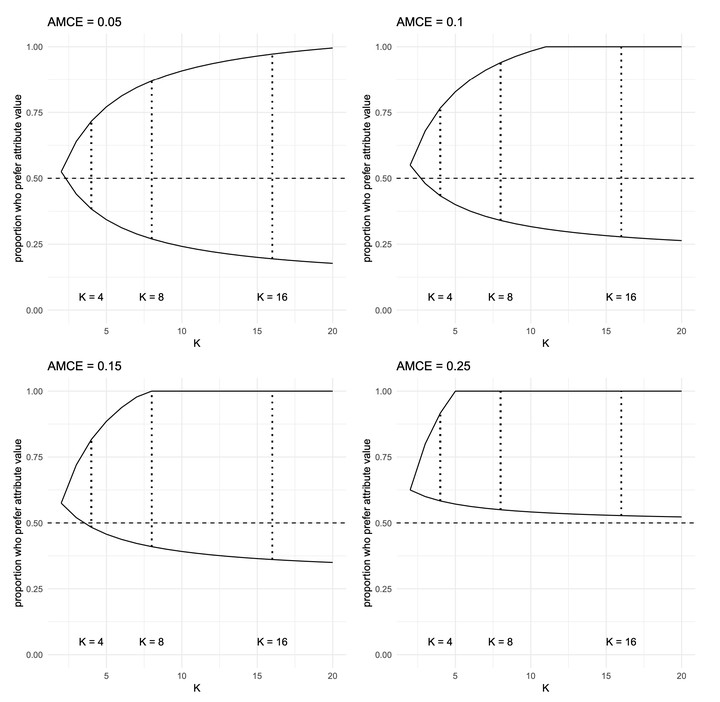 As the number of possible profiles in a conjoint experiment increases, the bounds on the proportion of survey respondents who prefer an attribute value grow too large to detect a majority preference.
As the number of possible profiles in a conjoint experiment increases, the bounds on the proportion of survey respondents who prefer an attribute value grow too large to detect a majority preference.
Abstract
Political scientists frequently interpret the results of conjoint experiments as reflective of voter preferences. In this paper we show that the target estimand of conjoint experiments, the AMCE, is not well-defined in these terms. Even with individually rational experimental subjects, unbiased estimates of the AMCE can indicate the opposite of the true preference of the majority. To show this, we characterize the social choice correspondence implied by AMCE and demonstrate its several undesirable properties. With this result we provide a method for placing sharp bounds on the proportion of experimental subjects with a strict preference for a given candidate-feature. We provide testable assumptions that help reduce the size of these bounds. Finally, we offer a structural interpretation of the AMCE and highlight that the problem we describe persists even when a model of voting is imposed.